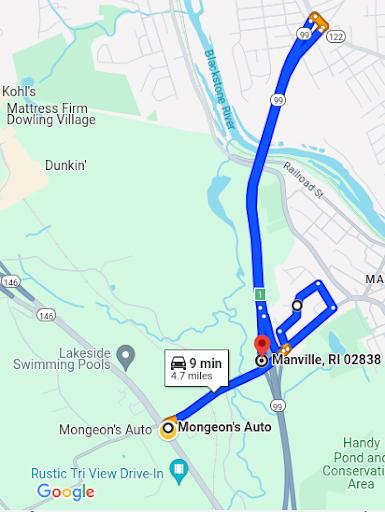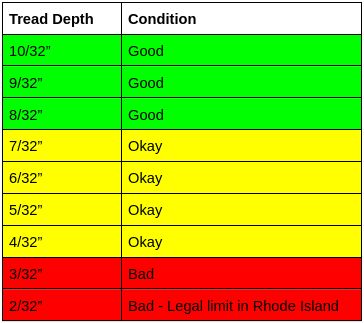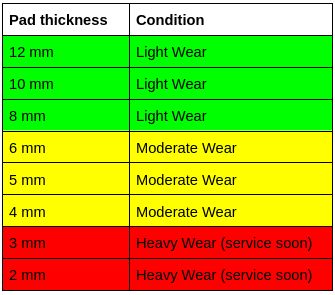Surveying a Vehicle
This is a general guide on how to find a reliable vehicle whether you are buying from us, another dealer, or private party. Vehicles that score well on this survey are rare and will typically be two or three thousand dollars more than vehicles that score poorly. However in the long run they will absolutely last longer and be less expensive to own.
Undercarriage
How is the chassis? This is the most important question to ask when looking at used vehicles. Ensure the chassis does not have any holes caused by rot. This is dangerous. If you see a chassis that is rotted or soon to become rotted move to the next vehicle. When I see push plates for a plow in a vehicle advertisement, I'm not too optimistic. It is rare to see the factory paint/undercoat on trucks 10+ years old. If the factory paint/undercoat is still visible, seriously consider this vehicle.
Leaks
Is there any oil or coolant under where the vehicle is parked? Yellowish brown is engine oil (diesel engine oil is black) and red is transmission fluid (also used for power steering). Coolant is green or orange and water like.
Oil Pans - Look at the engine and transmission pans as they are the lowest point. Here are three outcomes:
- Is there a drip coming off any of them? This will need further investigation as it won’t take long before the oil is low enough to cause damage. Buyer beware.
- Is there acceptable seepage from the pan gasket? This might look like griminess around the pan gasket. This is most likely due to bolt relaxation and gasket creep. The recommended action is retorquing the pan bolts, wiping everything down, and then re-checking after driving.
- Are the pans bone dry? There are not too many older vehicles with dry pans. Seriously consider purchasing this vehicle.
Transmission Lines - There are many used trucks that have transmission lines that are ready to let go. If they look like you could grab the line and it would snap in two when pulled, you are taking an expensive risk. Replacement is advised. If they look solid, seriously consider buying this vehicle.
Differentials - You usually do not see differentials dripping because the oil is pretty thick. If a diff is leaking it is usually pretty slow and likely the cover gasket, pinion seal, or fill plug (we recommend using teflon sealant on threaded fill plugs). Lucky on a rear diff these issues are easy to repair. On a front diff there is a little less room to work. If there is a leak pay extra attention for any humming or grinding noises during acceleration to make sure there is no internal damage then make sure the proper repairs are done. If the diffs are dry all the better!
Engine
Start the engine up and listen for any metallic sounds. Note that fuel injectors are solenoids that tick every time they open and close and this is normal. A non-normal engine sound is one that increases in loudness at higher RPM. A bottom end noise is a deep sounding knock while a top end is going to be fast paced because the valve train rotates at twice the speed of the crank.
Exhaust
Many older trucks will have broken exhaust manifold studs/bolts. If you start the truck up and you hear an exhaust leak from under the hood check to see if there are any broken studs.
Scan Tool (OBDII System)
If the check engine light is illuminated there is at least one stored code. Plug a scan tool into the vehicle even if the light is out as there can be pending codes that have not illuminated the check engine light yet.
Additionally you can check the vehicle monitors. Monitors are marked complete when a vehicle under certain operating conditions completes one or multiple self tests for the component. A scan tool will display what monitors are complete and incomplete. If all monitors are completed and there are no codes, all components monitored by the OBD2 system are working correctly.
A note on incomplete monitors. If the vehicle battery has gone dead the monitors will reset to incomplete. Also, evap is (evaporative emissions) usually the last one to complete and can take a while. I have even had a vehicle that I owned for years and it never showed evap as being complete. There were never any evap issues. RI inspection allows for one incomplete monitor because this can be common.
HVAC
If you want to ensure your comfort check the function of the A/C and heat.
Test Drive
Choose a test drive route that will give you city and highway driving. It is important to get the vehicle up to highway speed but also on roads that might need a little repair.
Route recommendation - If you take a right out of our entrance head down the hill and under the bridge you can turn around in a neighborhood on the left. Then proceed to get onto Rt 99 north to test at highway speed. At the end of Rt 99 you can turn around (stay in the left lane) getting onto Rt 99 south. Take the first exit and head back up the hill up to our dealership.

During a test drive evaluate for front end clunking, unbalanced tires, wheel bearing noise. It is easy to confuse aggressive tires with wheel bearing noise. When taking corners, a wheel being will be louder or quieter depending on what side needs replacement. Aggressive tires will be constantly loud.
Tires

This is purely speculation but if tire manufacturers state that tires are good between 20k miles and 30k miles and safe between 10/32” and 4/32” we can approximate miles per 32nd of an inch. Take 25k miles as the average life of a tire and divide by six gives you 4,166 miles/32”. Driving habits will affect this.
Brakes

Purely speculation again. If brake pad manufacturers claim that pads last 30-35k miles in city driving and 80k miles on highway we can assume 50k miles before replacement. If the acceptable pad thickness is between 12 mm and 4 mm this would give you just over 8k miles per mm. Driving habits will affect this.